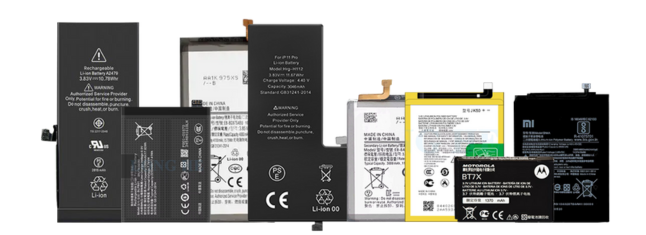Company News
In-Cell screens VS On-Cell screen
Views : 6734
Update time : 2022-07-22 17:55:52
On-cell: Indicates that the touch layer will be above the liquid crystal
refers to the method of embedding touch screen between color filter and polarizer of display screen. It means touch sensor is equipped on LCD panel, which is much less difficult than in Cell technology
In-Cell: It refers to the method of embedding the touch panel function into the liquid crystal pixels, it means embedding the touch sensor function inside the display screen, which makes the screen thinner and lighter.
To thoroughly understand screens such as In-Cell/On-Cell, you must first understand the basic structure of the screen. It can be clearly understood from the figure below that the structures of in-cell and on-cell are similar. In both touch screen solutions, there is a protective glass on the top to protect the touch screen and LCD panel. The obvious difference is that in-cell is to build the touch screen layer into the LCD panel, while on-cell is to make the touch screen layer on the LCD. Due to the difference in touch technology, the screen of in-cell phone is thinner than that of on-cell.

In-Cell and On-Cell have different structures, different screen brightness, different display effects, different manufacturing costs and different yields:
1. In terms of screen transparency and visual effects, In-Cell and On-Cell screen transparency and visual effects are not much different.
2. Thickness. Generally speaking, In-Cell is the lightest and thinnest. This is also one of the reasons why the iPhone uses a metal body and can still be extremely thin and light. On-cell is slightly worse than in-cell.
3. Screen strength (impact resistance, drop resistance), On-Cell is better than In-Cell.
4. In terms of touch, the In-Cell screen directly fuses the touch layer with the liquid crystal layer, and the induced noise is relatively large, which requires a special touch chip for filtering and correction processing.
5. In terms of yield, with the continuous investment of manufacturers and the maturity of technology, the yield rate of In-Cell/On-Cell screens has been at the same level, and large-scale shipments are not a problem.
refers to the method of embedding touch screen between color filter and polarizer of display screen. It means touch sensor is equipped on LCD panel, which is much less difficult than in Cell technology
In-Cell: It refers to the method of embedding the touch panel function into the liquid crystal pixels, it means embedding the touch sensor function inside the display screen, which makes the screen thinner and lighter.
To thoroughly understand screens such as In-Cell/On-Cell, you must first understand the basic structure of the screen. It can be clearly understood from the figure below that the structures of in-cell and on-cell are similar. In both touch screen solutions, there is a protective glass on the top to protect the touch screen and LCD panel. The obvious difference is that in-cell is to build the touch screen layer into the LCD panel, while on-cell is to make the touch screen layer on the LCD. Due to the difference in touch technology, the screen of in-cell phone is thinner than that of on-cell.

In-Cell and On-Cell have different structures, different screen brightness, different display effects, different manufacturing costs and different yields:
1. In terms of screen transparency and visual effects, In-Cell and On-Cell screen transparency and visual effects are not much different.
2. Thickness. Generally speaking, In-Cell is the lightest and thinnest. This is also one of the reasons why the iPhone uses a metal body and can still be extremely thin and light. On-cell is slightly worse than in-cell.
3. Screen strength (impact resistance, drop resistance), On-Cell is better than In-Cell.
4. In terms of touch, the In-Cell screen directly fuses the touch layer with the liquid crystal layer, and the induced noise is relatively large, which requires a special touch chip for filtering and correction processing.
5. In terms of yield, with the continuous investment of manufacturers and the maturity of technology, the yield rate of In-Cell/On-Cell screens has been at the same level, and large-scale shipments are not a problem.
Related News

Significant DHL Rate Increases
Sep .25.2025
The peak shipping season is approaching! DHL rates will increase substantially!

Phone Battery Promotion - Exclusive Benefits for Valued Customers
Sep .09.2025
Purchase the Specified Quality of Phone Batteries. Get Shipping Coupon Saving Up to USD$300

Which is better, tempered film or hydrogel film
Aug .04.2025
Many people believe that when buying a mobile phone, they will also buy a phone protective film to protect the screen of their phone. There are many phone films on the market now, in addition to the well-known tempered glass film, there is also a type of

The Process of Framing Mobile Phone Screens
Jun .03.2025
Mobile screen framing mainly includes six steps: checking the appearance, attaching wiring, applying glue, installing the LCD screen, rechecking after installation, and removing the rubber band to clean the glue.

